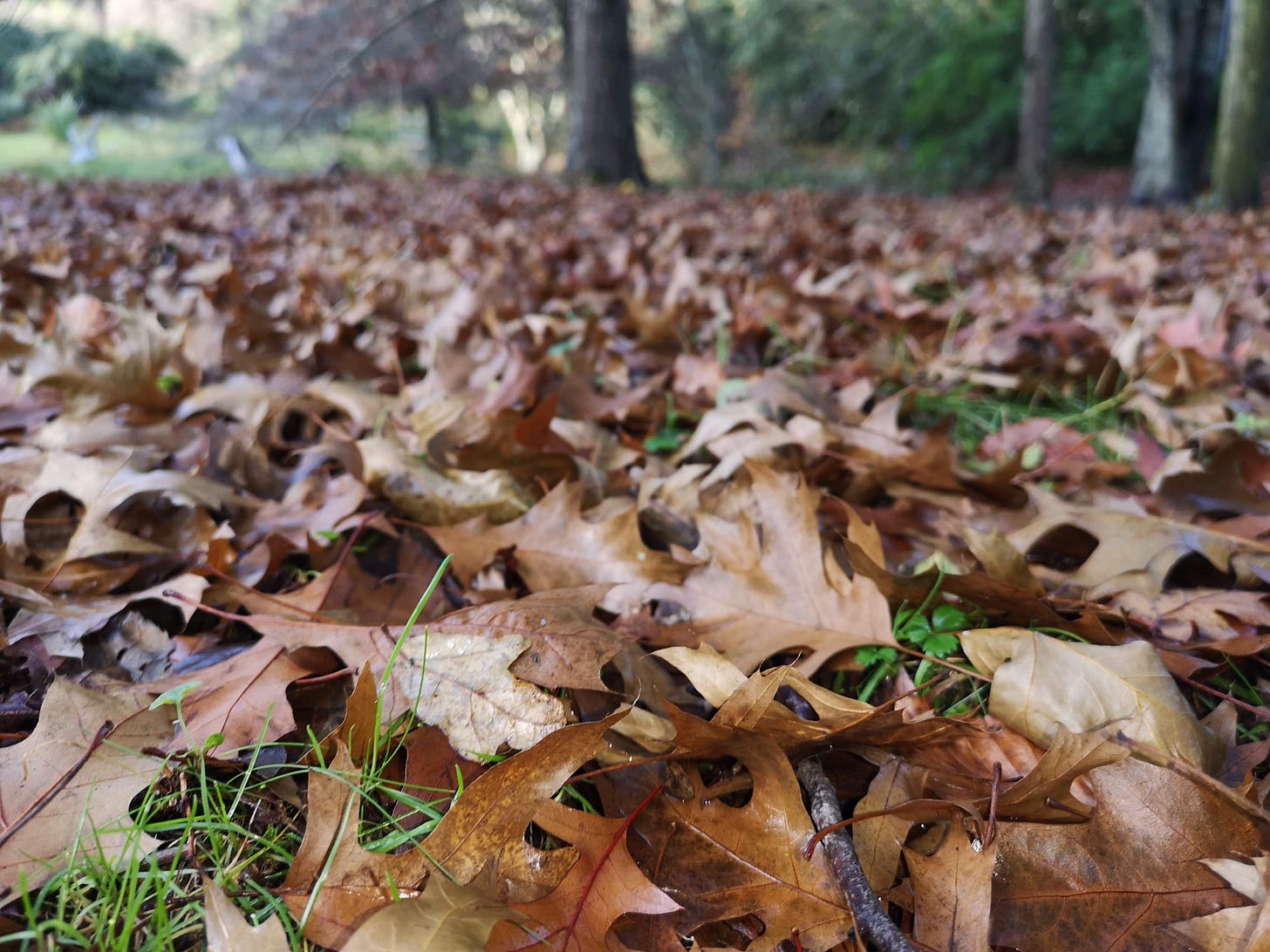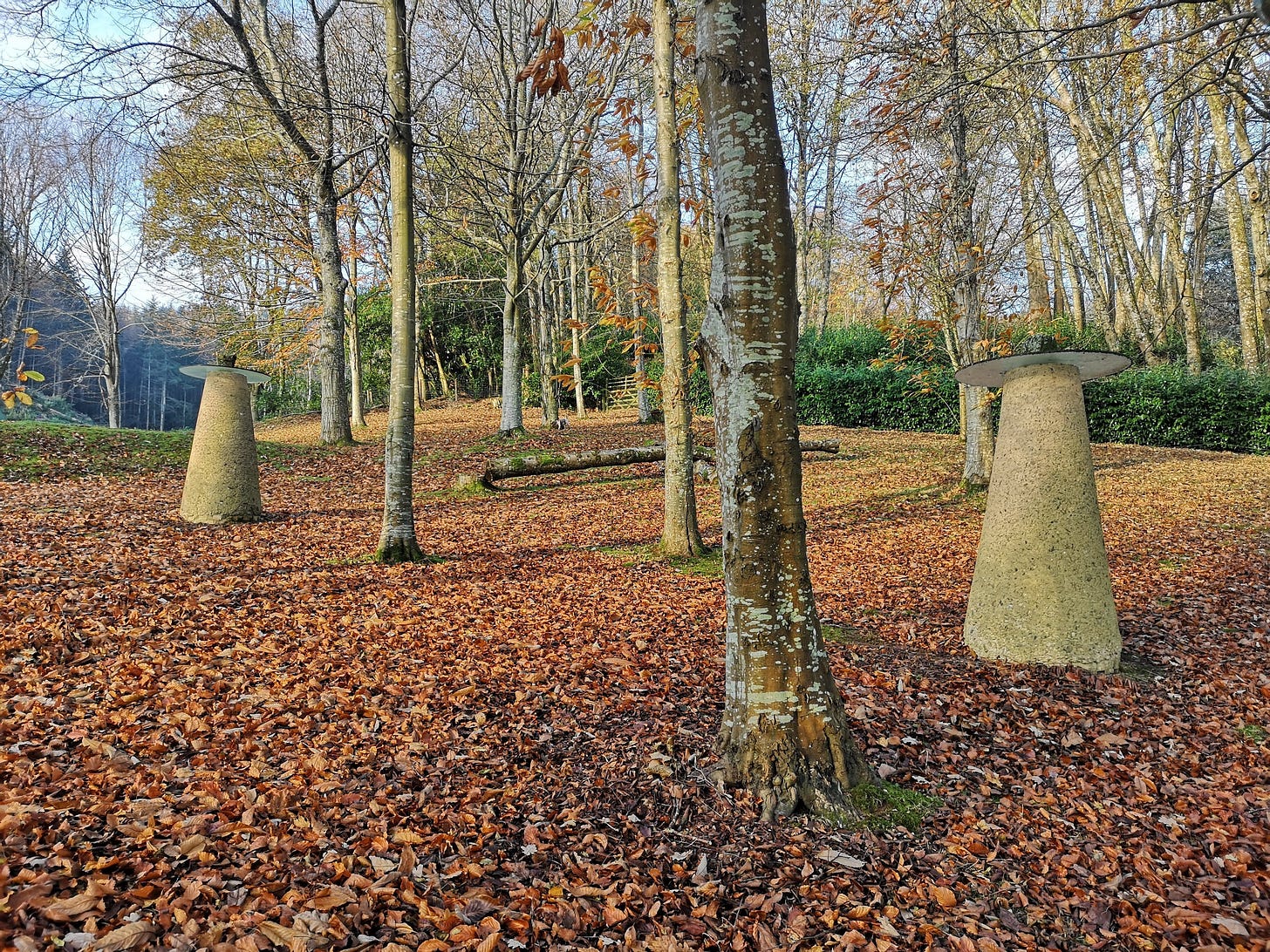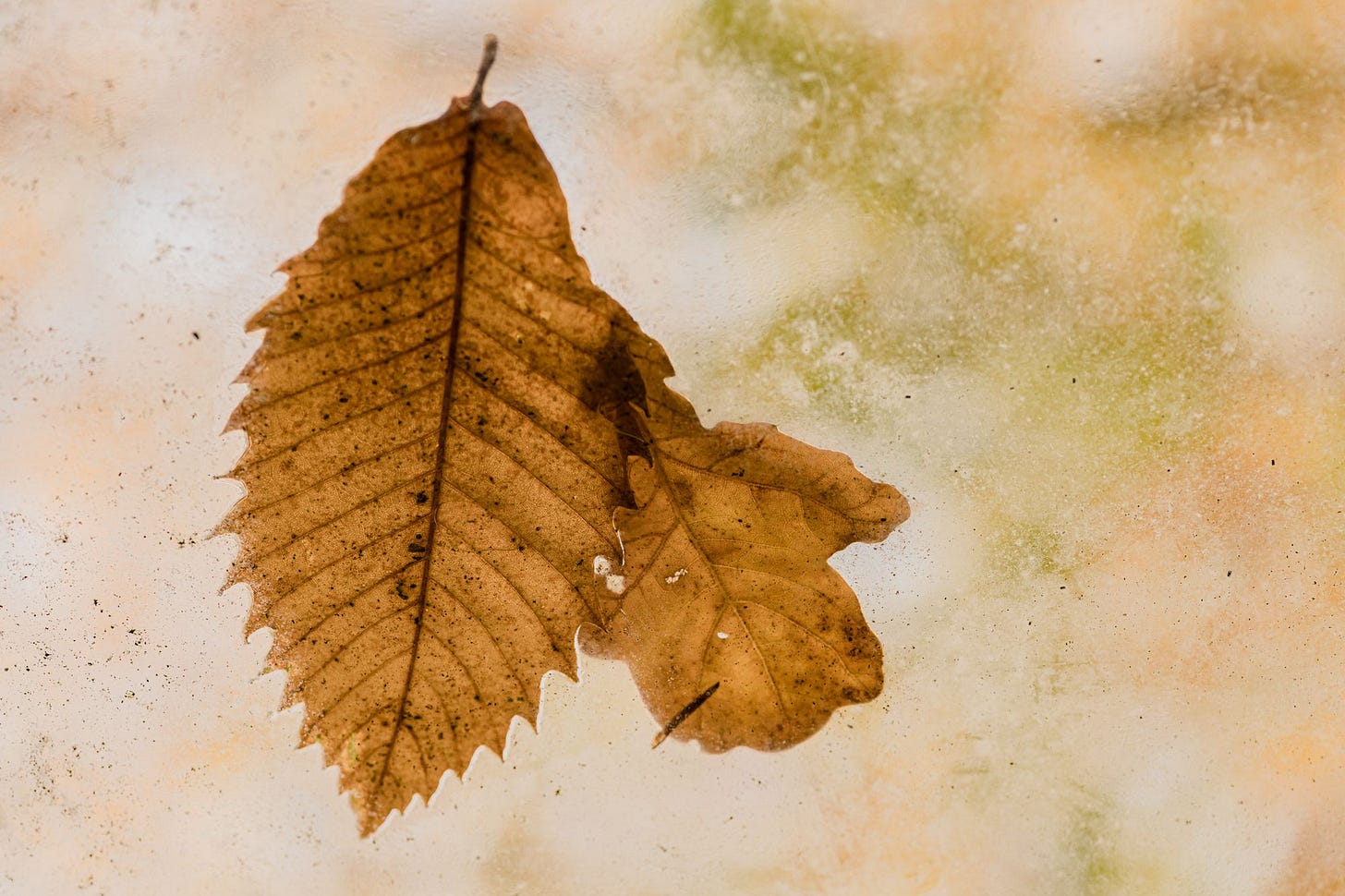The Secret Wilderness in Your Leaf Pile!
Did You Know? The Hidden World of Micro-Wilderness Awaits in Your Very Own Leaf Pile! 😍
Crunch. That unmistakable sound of autumn underfoot, the crisp crumble of fallen leaves, signals the turning of the seasons. To many, leaf piles are simply yard waste waiting for the compost bin. But to the natural world, they’re something far more extraordinary: a micro-wilderness teeming with life, transformation, and quiet magic.
Crouch down beside that heap of fallen leaves in your garden corner. Listen carefully. Beneath the rustle of oak and maple, there’s an entire civilisation humming with life. A micro-wilderness as complex and vibrant as any jungle, just at a scale that fits in your backyard. It’s humid and earthy down there, a miniature rainforest tucked beneath the bare branches above. The air smells of moss and decay - life’s grand recycling system at work.
That pile of crinkled amber and burnt sienna isn’t garden waste. It’s a five-star hotel, restaurant, and maternity ward rolled into one, bustling with more residents than you’d find on a busy city street.
A Universe Unfolds
Peel back the top layer of your leaf pile and you’ll discover a gradient of decomposition, each level hosting its own community. The crispy surface crackles underfoot, but just beneath lies a darker, damper world where leaves soften into a moist blanket. Here, the temperature rises a few precious degrees, enough to make all the difference on a frosty November morning.
Lift a leaf and you might spot a centipede darting away, its sinuous body moving like a living ribbon, or a millipede calmly munching through soft detritus, digesting what trees no longer need. These creatures, invisible to the casual passerby, are the engineers of the soil, the unseen workforce that keeps our ecosystems alive.
Ground beetles scuttle through the labyrinth of veins and stems, their metallic backs catching fragments of filtered light. Shiny and black, the beetles patrol like miniature panthers, hunting for unsuspecting prey: worms, slugs, or the occasional ant that’s wandered too far from its nest. Millipedes curl into defensive spirals when disturbed, their countless legs a marvel of natural engineering. Springtails, those tiny, primitive insects most people never notice, leap through the leaf litter like microscopic kangaroos, consuming fungal spores and decomposing matter.
The woodlice patrol their territories, those armoured minibeasts that roll into perfect spheres when threatened. They shuffle slowly, clad in their segmented armour, turning dry leaves into nutrient-rich crumbs. Despite their name, they’re actually crustaceans that evolved to live on land, carrying their aquatic ancestry in their need for moisture. Your leaf pile provides exactly that: a damp refuge in an otherwise dry terrestrial world.
And as temperatures drop, the leaf pile becomes a refuge. Frogs burrow into its damp warmth, toads tuck themselves deep within, and hedgehogs. Those beloved icons of the British garden often choose leaf piles as their winter sanctuary. Even overwintering butterflies, like the peacock and small tortoiseshell, may shelter here, wings folded in sleep until the first blush of spring.
The Decomposition Dynasty
As autumn deepens into winter, the real magic begins. Fungi thread their invisible networks through the leaves, breaking down tough cellulose into nutrients the soil can absorb. These fungal highways connect trees across your garden, facilitating an underground internet of resource sharing that scientists are only beginning to understand.
The magic of a leaf pile isn’t just in the creatures it shelters; it’s in the transformation it sparks. As autumn’s castoffs break down, they release a slow, steady trickle of nutrients into the soil. Leaf litter feeds fungi, which in turn feeds plants. It enriches earthworms and microbes that aerate and renew the soil, creating a living cycle of decay and rebirth. Over weeks and months, the crisp reds and golds of autumn melt into a soft, dark mulch, - nature’s own compost, fuel for the next season’s growth.
Earthworms emerge from below, pulling leaves down into their burrows, churning and mixing organic matter with mineral soil. A single earthworm can process its own weight in soil every day, and your leaf pile is an all-you-can-eat buffet. What they leave behind, called worm castings, is black gold: nutrient-rich fertiliser that makes plants thrive without any synthetic supplements.
The chemical transformation happening in your leaf pile is quietly miraculous. Tough winter leaves, packed with carbon, gradually break down into humus-rich mulch that improves soil structure, retains moisture, and feeds billions of soil microorganisms. This isn’t waste management - t’s soil creation, the same process that built the fertile ground beneath ancient forests.
And the best part? It’s effortless. Simply by leaving leaves where they fall, or raking them into a quiet corner, you’re creating habitat, food, and shelter. You’re helping the soil breathe, holding moisture in the ground, and giving insects a home through the cold months. In short, you’re rewilding - one leaf pile at a time.
The Dinner Bell Rings
Word spreads quickly in the animal kingdom about a good foraging spot. Robins and blackbirds become regular visitors, flicking leaves aside with sharp flicks of their beaks, snatching up beetles and larvae. Hedgehogs shuffle through at dusk, their snuffling audible as they hoover up slugs and snails. Shrews, those hyperactive bundles of fur with metabolisms that never rest, hunt through the layers for invertebrate prey.
Even foxes and badgers occasionally investigate leaf piles, though they’re usually after the small mammals sheltering beneath. Mice and voles tunnel through the insulating layers, creating cosy nests safe from winter’s bite and predators’ eyes. Toads and newts seek shelter here too, waiting out the cold months in a state of semi-dormancy.
Your leaf pile becomes a hub in the local food web, connecting decomposers to predators, plants to pollinators, soil to sky.
The LettsSafari Way
This is exactly what LettsSafari is all about - recognising that rewilding doesn’t require vast estates or complicated schemes. Sometimes the most powerful conservation action is simply doing less: leaving those leaves, creating brush piles, letting corners go wild. Our network of smaller-scale safari parks, gardens, and backyards shows how even tiny wild spaces, whether it’s a meadow strip, a pond, or yes, a humble leaf pile, can become sanctuaries for wildlife and people alike.
Our approach is playful, practical, and deeply hopeful: restoring nature while reminding us how joyful it can be to reconnect with it.
Small-scale rewilding works because nature is fractal. The same core principles governing a thousand-acre reserve apply to your garden corner. Create habitat, provide food, allow natural processes to unfold, and wildlife will respond.
We believe everyone can be a rewilding ranger, starting with simple choices like keeping leaf piles. These micro-wildernesses prove that restoration is accessible, practical, and frankly, irresistible once you’ve witnessed the secret world beneath those autumn leaves. So this year, put down the rake and pick up your curiosity instead. Your garden’s wildest residents are waiting.
So, as autumn deepens and the temptation to tidy up grows strong, pause before you sweep those leaves away. Instead, step closer. Listen to the whisper of the wind through the dry, papery canopy. Breathe in the musk of moss and soil. Imagine the bustling life beneath your feet—the beetles, worms, and fungi turning decay into life, the hedgehog dreaming in its leafy burrow.
In that small, scruffy corner of your garden lies a universe in miniature: a micro-wilderness, alive and humming, doing nature’s quiet work. Leave it be, and you’ll be joining a growing movement of people and creatures, helping to heal the planet, one leaf pile at a time.
Get more LettsSafari updates and wildlife photos from our twitter. And read the latest posts at the LettsSafari + website.








